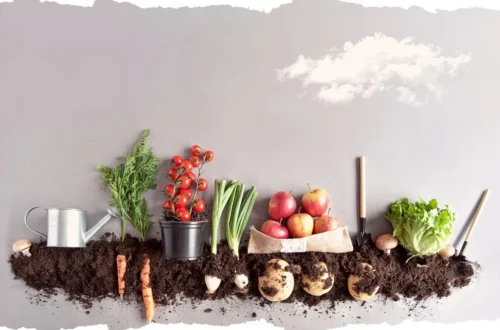Indoor farming gives you control over what you grow, when you grow it, and how it grows — all without needing outdoor space. But even the most high-tech indoor setups aren’t immune to challenges. Pests, diseases, nutrient imbalances, mold, and water issues can still sneak in and compromise your farm’s success.
Whether you’re using soil, hydroponics, grow tents, or vertical systems, this guide will help you troubleshoot the most common problems in indoor farming and keep your crops healthy from seed to harvest.
🐛 1. Pests in a Controlled Environment

Even indoors, pests can find their way into your system, especially when bringing in new plants, tools, or contaminated soil.
Common Indoor Farming Pests:
- Aphids: Soft-bodied insects that cluster under leaves and on stems.
- Spider Mites: Tiny, red or white dots that cause speckled leaves and webbing.
- Fungus Gnats: Small black flies that lay eggs in wet growing media.
- Whiteflies: Small white moth-like bugs that suck sap and multiply quickly.
Solutions:
- Inspect new plants before introducing them.
- Use yellow sticky traps to monitor and control flying insects.
- Apply neem oil or insecticidal soap regularly.
- Increase airflow to reduce humidity and deter pests.
- Introduce beneficial insects like ladybugs (if using a tent or greenhouse-style setup).
💦 2. Watering & Irrigation Issues

Water-related issues can arise in both soil-based and hydroponic systems.
Soil-Based Systems:
- Overwatering: Causes root rot, mold, and fungal diseases.
- Underwatering: Leads to wilting, dry leaves, and poor nutrient uptake.
Hydroponic Systems:
- Clogged pumps or blocked lines: Interrupt nutrient delivery.
- Low oxygenation: Leads to root rot in water-based systems.
- Incorrect pH or EC: Nutrient lockout even if water looks fine.
Solutions:
- Use a moisture meter for soil systems.
- Schedule irrigation cycles and monitor for clogs in hydro setups.
- Maintain proper pH (usually 5.5–6.5 for hydroponics).
- Add air stones or oxygen pumps to keep water oxygenated.
🍄 3. Mold, Mildew, & Humidity Problems

Indoor farms are especially vulnerable to humidity issues, which can lead to:
- Powdery mildew: White, powdery growth on leaves.
- Botrytis (gray mold): A fuzzy gray mold on stems and fruit.
- White mold on soil/media: A sign of high moisture and low airflow.
Solutions:
- Use a hygrometer to monitor humidity (ideal range: 40–60%).
- Run fans or install ventilation to improve air circulation.
- Space plants properly to allow airflow between them.
- Prune excess foliage to reduce humidity buildup.
🦠 4. Nutrient Deficiencies & Toxicities
In hydroponics and soil alike, nutrient problems are common and often show up in the leaves.
Signs of Deficiency:
- Yellowing (Chlorosis): Nitrogen, magnesium, or iron deficiency.
- Purple/Red Leaves: Phosphorus deficiency.
- Curling/Tip Burn: Potassium deficiency or salt buildup.
- Slow Growth: General nutrient imbalance.
Signs of Toxicity:
- Leaf edge burn
- Very dark green leaves
- Nutrient lockout (caused by pH imbalance or overfeeding)
Solutions:
- Monitor EC (electrical conductivity) and pH in hydro systems.
- Flush systems if salt buildup occurs.
- Feed balanced, crop-specific nutrients.
- Rotate between feeding and plain water (especially in soil systems).
🔆 5. Lighting Issues
Lighting is everything in indoor farming — too much or too little light leads to weak, unhealthy plants.
Symptoms:
- Too Little Light: Pale leaves, slow growth, leggy stems.
- Too Much Light: Leaf curling, scorched edges, color bleaching.
Solutions:
- Use full-spectrum LED grow lights designed for your crop type.
- Adjust light height and duration based on plant stage (seedlings vs. fruiting).
- Follow recommended PPFD (photosynthetic photon flux density) levels.
🧪 Essential Tools for Troubleshooting
To monitor and maintain your indoor farm, keep these tools handy:
- pH & EC meter (for hydroponics)
- Moisture meter (for soil setups)
- Thermometer and hygrometer
- Sticky traps
- Pruning shears and sanitizing spray
- Backup water pumps and timers
- Grow light timer
- Pest control spray (organic/neem-based)
🌱 Final Thoughts
Indoor farming is one of the most powerful ways to grow fresh, healthy food year-round — but like all growing systems, it comes with challenges. The key is prevention, observation, and early intervention. By staying on top of lighting, nutrients, airflow, and moisture, you can quickly troubleshoot most problems and enjoy a thriving, high-yield indoor farm.
Healthy plants start with informed farmers. Keep learning, stay curious, and grow on!




